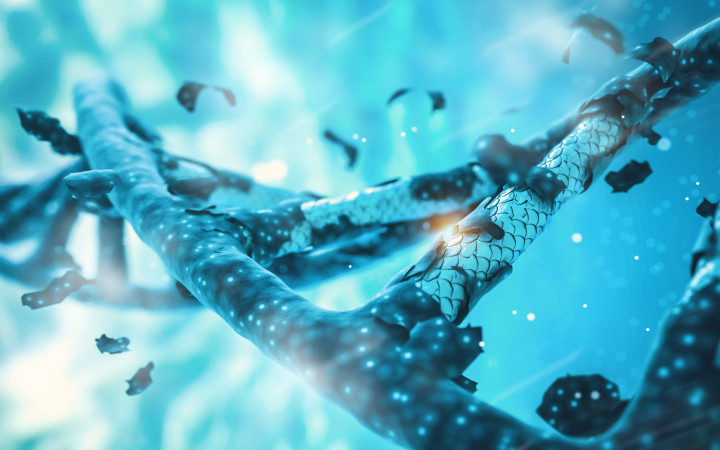Today’s Wonder of the Day was inspired by Adrian. Adrian Wonders, “What is Down syndrome” Thanks for WONDERing with us, Adrian!
Have you ever had something extra? Answer a bonus question on a test, and you might get an extra point. Order four chicken nuggets, and sometimes you’ll end up with five. Ask for a baker’s dozen, and you’ll have an extra doughnut.
A lot of the time, extras are great! Other times, they can cause problems. People born with extra organs might have to get them removed. Those with extra toes or fingers may not mind so much. What about people with extra chromosomes? They have something called Down syndrome.
Chromosomes are small groups of genes. They contain DNA and are part of every cell in our bodies. Chromosomes control how our bodies form. They also affect how we function throughout life. Most people are born with 46 chromosomes. Others are born with 47. When a person has 47 chromosomes instead of 46, they are diagnosed with Down syndrome.
What are you good at? Can you draw well? Do you have a good singing voice? We’re all better at some things than we are at others. Those of us with Down syndrome also have different skill levels. Some are able to do most things themselves. For others, Down syndrome makes it hard to live independently. The disorder can cause a lot of mental and physical challenges, like low muscle tone and IQ. However, these challenges are often mild to moderate, and people with Down syndrome use their different abilities to contribute to society in many ways.
We know that an extra chromosome causes Down syndrome. But what causes the extra chromosome? Experts have looked for the answer since the disorder was found by Jérôme Lejeune in 1959. We don’t know what causes the extra chromosome. But we have learned a lot about the disorder itself. For example, today we know there are three types of Down syndrome. Their names are Trisomy 21, Translocation Down Syndrome, and Mosaic Down Syndrome. 95% of Down syndrome cases are Trisomy 21.
Down syndrome is the most common chromosomal condition in the United States. About 6,000 babies are born with it in the U.S. each year. That’s about one in every 700 babies. Speech and physical therapy helps people with Down syndrome improve their mental and physical abilities.
Some people with Down syndrome have become famous! They‘ve had success in fashion, film, and politics. For example, Isabelle Springmühl is a designer with Down syndrome and was featured at the London Fashion Week. Actress Jamie Brewer also modeled in 2015’s New York Fashion Week. Another actress, Lauren Potter, appeared on the hit show Glee. Now, she advises the White House on issues affecting people with disabilities. Actor Pablo Pineda was the first European with Down syndrome to graduate from college. Finally, Angela Bachiller became the first person with Down syndrome to hold public office in 2013.
Down syndrome makes life harder in some ways. Still, people with Down syndrome also have special gifts and abilities. As you can see, there’s no reason to let Down syndrome hold you back. And why would you? After all, it’s just an extra chromosome!
Standards: NGSS.LS1.A, NGSS.LS3.A, NGSS.LS3.B, CCRA.L.3, CCRA.L.6, CCRA.R.1, CCRA.R.2, CCRA.R.10, CCRA.W.2, CCRA.W.8, CCRA.W.7, CCRA.L.1, CCRA.L.2, CCRA.SL.1, CCRA.SL.2




